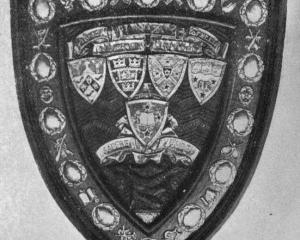
In the air the aeroplane, on land the ``tank'', under the sea the submarine; all owed their existence to its powers. In all three elements progress was practically unlimited.
There was no reason why the aeroplane should not assume the dimensions of a modern ocean liner, combined with a speed greater than ever yet attained. Curiously enough, this was a great drawback from a military point of view, and would form the most difficult problem of the future in aerial defence. To maintain a large accumulation of aeroplanes standardisation was essential.
Yet this implied the retention to type of certain fixed classes. Just as the Dreadnought type rendered obsolete all other types, so did a new aeroplane, possessing greater speed and climbing power, outclass all other existing types. And finality in speed, size, and climbing power was a long way off yet.
Before the war aeroplaning was a very uncomfortable mode of travelling, said Lieutenant-colonel Sleeman. One of the greatest discomforts was the extreme cold at high altitudes, also caused through the high rate of speed the machines travelled at. Now, however, the military authorities had instituted a waistcoat for airmen. This waistcoat is lined with electric wires which, when charged with current, made the chilly airman quite warm.
Tree planting advocated
Among the many topics discussed by Mr D. Tannock, superintendent of reserves, Dunedin, in an address in Wanganui last week, was that of afforestation. He stressed the value of tree-planting, especially for catchment areas. In Dunedin the City Council planted its catchment area at a cost of about 10 per acre; in about 15 years they could thin out the trees and by the sale pay the cost of the planting; the trees could be further thinned out at other periods and the sale go towards the cost of planting.
The gaps could be filled up with plants, so that there would be one crop growing while another was being cut. Tree-planting also served the purpose of keeping down gorse, and he recommended this for overcoming gorse in the Wanganui district. The ordinary pine was the most suitable for this purpose. For afforestation Oregon pine was the most useful tree, quick growing and most profitable. These could be grown in warm places, while in colder and wetter places Menzies spruce or Tideland spruce was a valuable tree. For growing on dry ridges, yellow pine was a most useful tree. He thought that, given an equal chance, trees would beat bracken.
Deserters arrested
Three deserters from military service, arrested at Maori Creek last week, were taken to Greymouth, and handed over to the military authorities. They were hiding in the bush, and when called upon by the police gave no trouble. One of the trio had been hiding for ten months. It is believed that these self-made outcasts of society have been assisted by civilians in their food supplies and also in keeping their whereabouts secret. - ODT 26.6.1918












